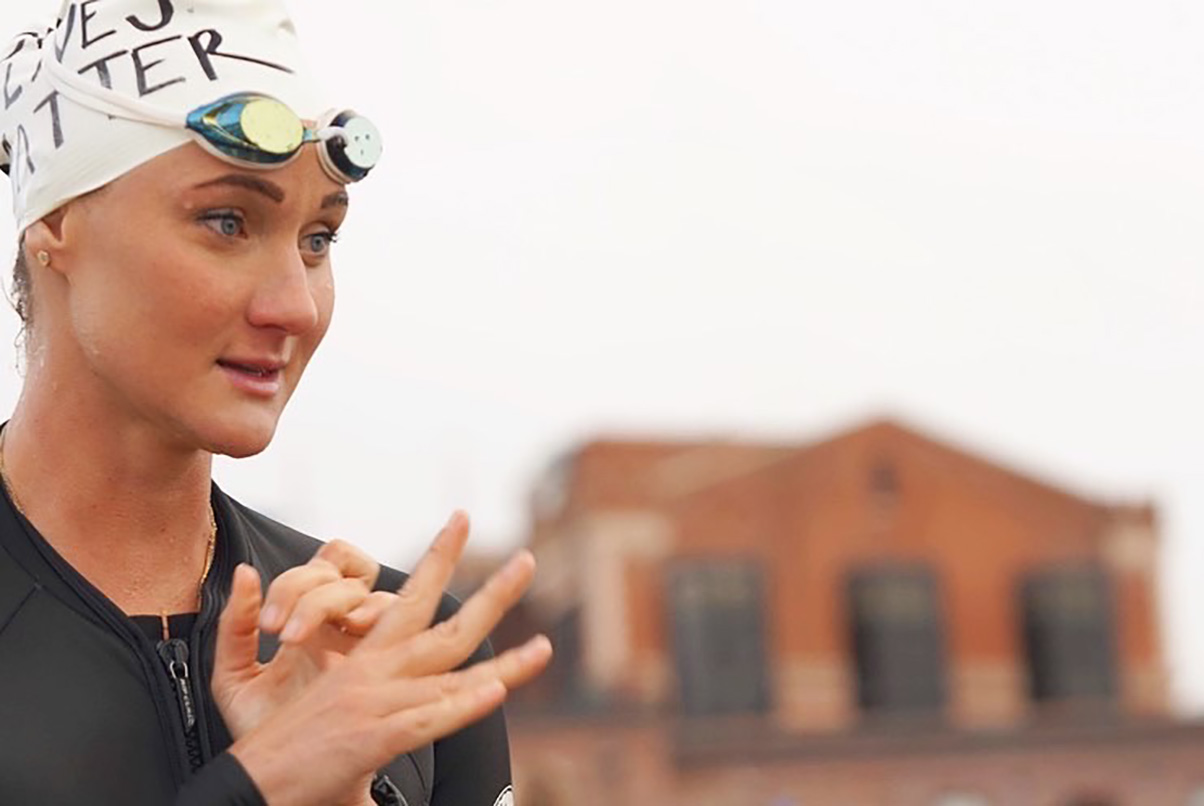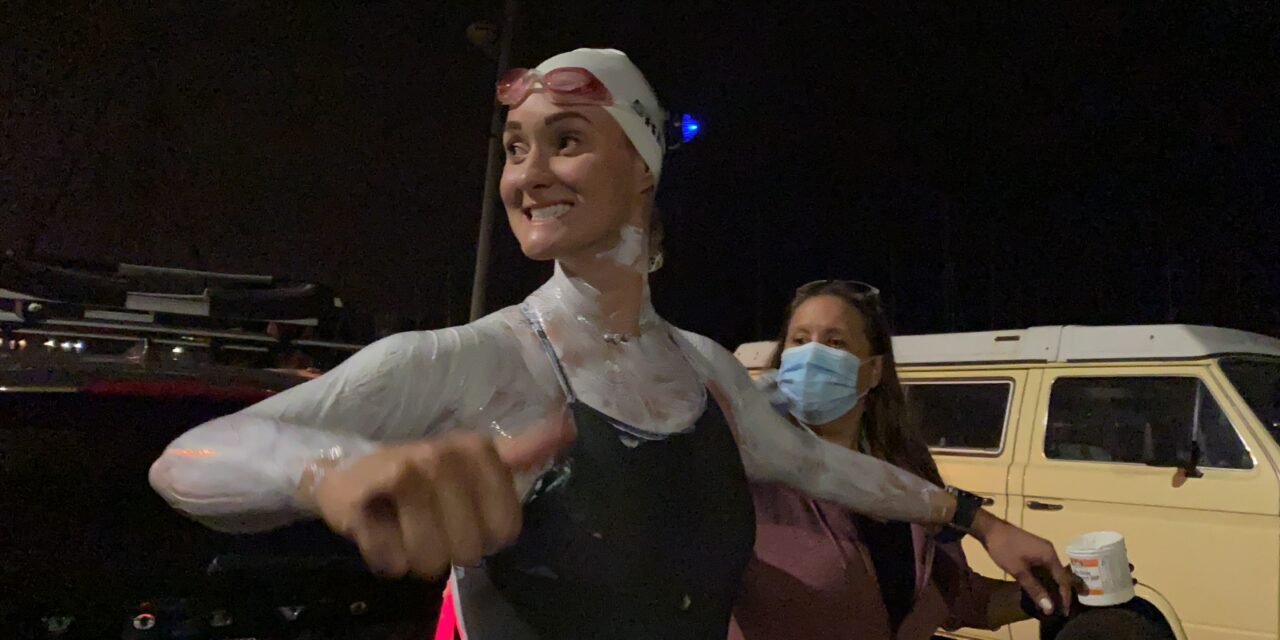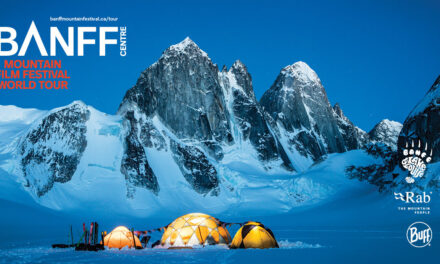Latest posts by Leonie Sherman
(see all)Catherine Breed Sets New Swim Record
At 9 PM on September 21, Catherine Breed slathered herself with zinc and Ocean Lube, donned a swim cap with two glowing lights and stepped into the Pacific Ocean at Seabright Beach, just past the Santa Cruz harbor. Twelve hours and 42 minutes later she arrived at San Carlos Beach, setting a new record for swimming 25 miles across the Monterey Bay.
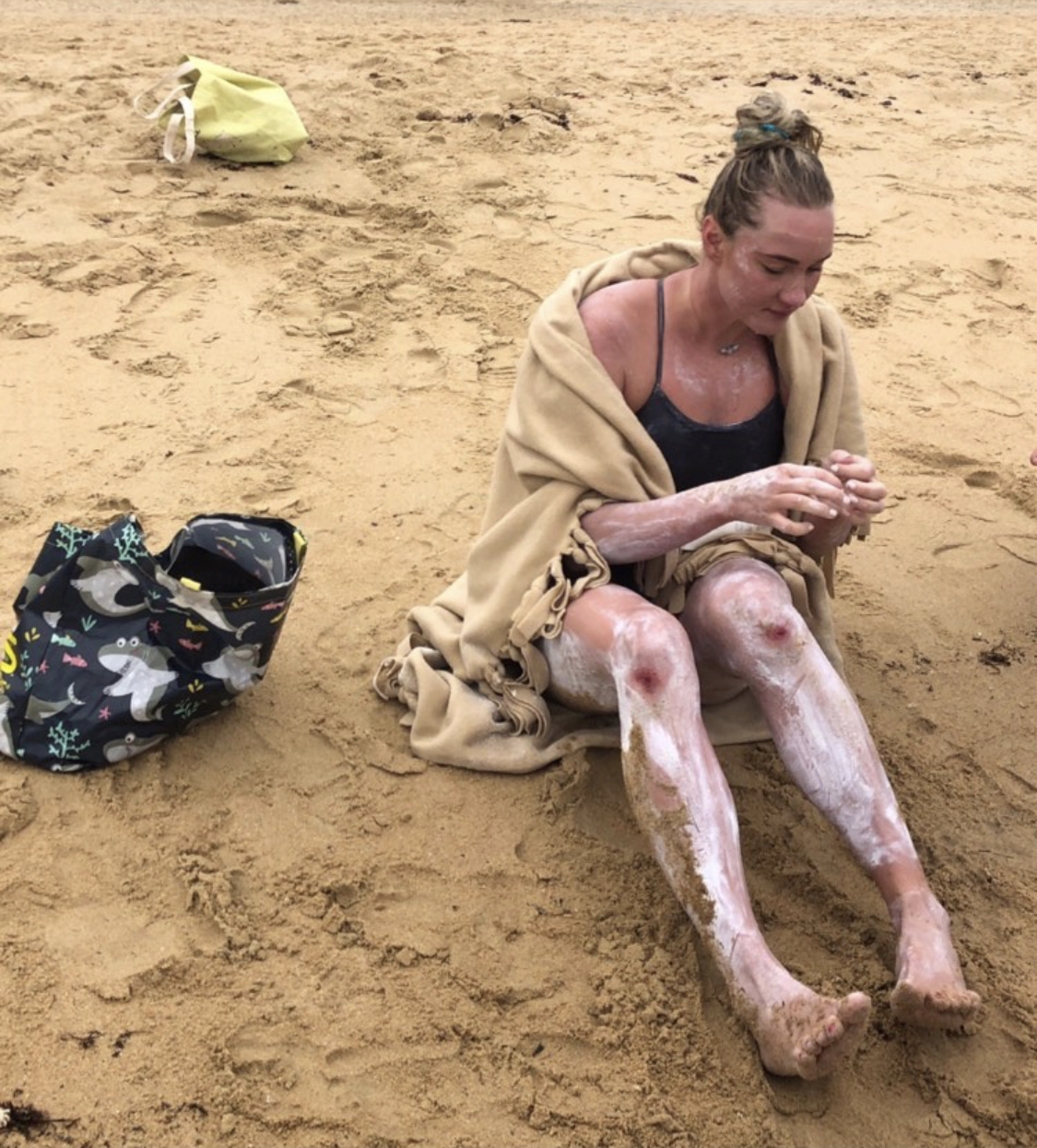
Catherine Breed with scraped knees from falling in the sand at the finish at San Carlos beach. Photo: Anders Jakobsson
A trans Monterey Bay Swim follows English Channel rules-swimmers can wear only a suit, goggles, ear plugs and a swim cap, and they’re not allowed to listen to music or carry a GPS. Since the first recorded Channel swim in 1875, over 1800 people have completed the crossing.
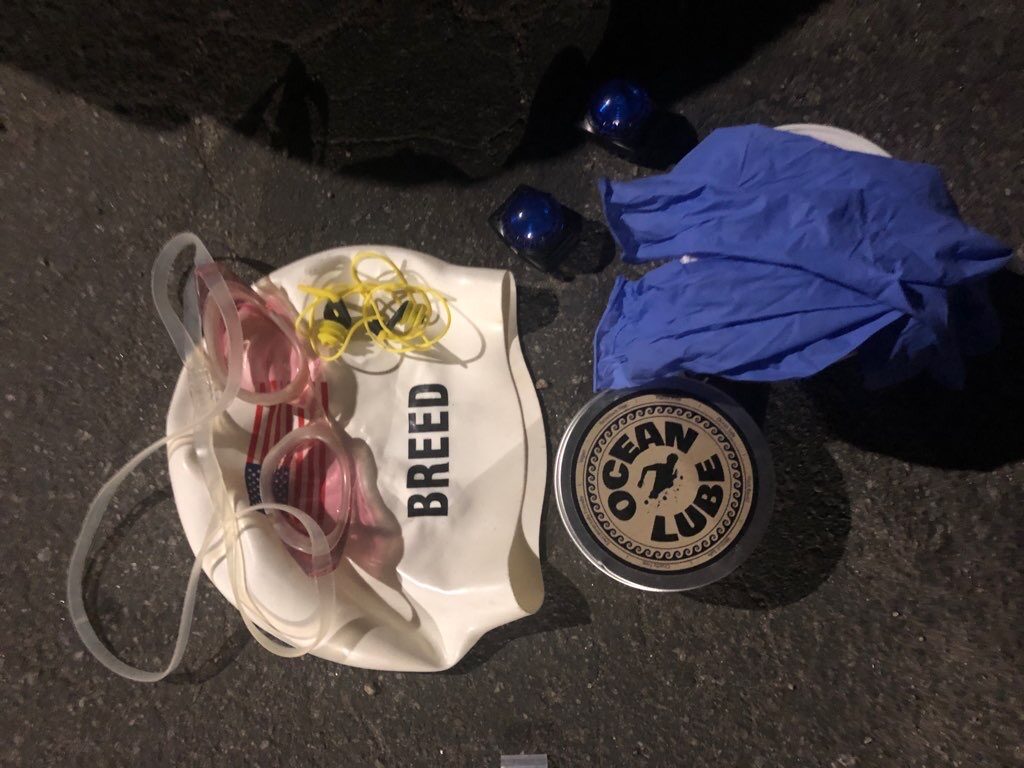
English Channel rules-swimmers can wear only a suit, goggles, ear plugs and a swim cap, and they’re not allowed to listen to music or carry a GPS. Photo: Robin Breed
The first documented swim across the Monterey Bay, which is four miles longer than the English Channel, took place in 1980. 34 years passed before the next successful crossing. On September 22, Breed became the sixth person to complete the swim. Five of them have been women. Breed broke the previous record by 18 minutes.
“Watching her is like watching an Olympic swimmer go at it for nine hours straight, it’s unbelievable,” explains Scott Tapley, the president of the Monterey Bay Swim Club. “When she swam the length of Lake Tahoe, she actually sped up for the last five or six miles.” Tahoe was Breed’s first ultra marathon swim, and she crushed the previous women’s time by an hour and 39 minutes and cut 24 minutes off the men’s record.
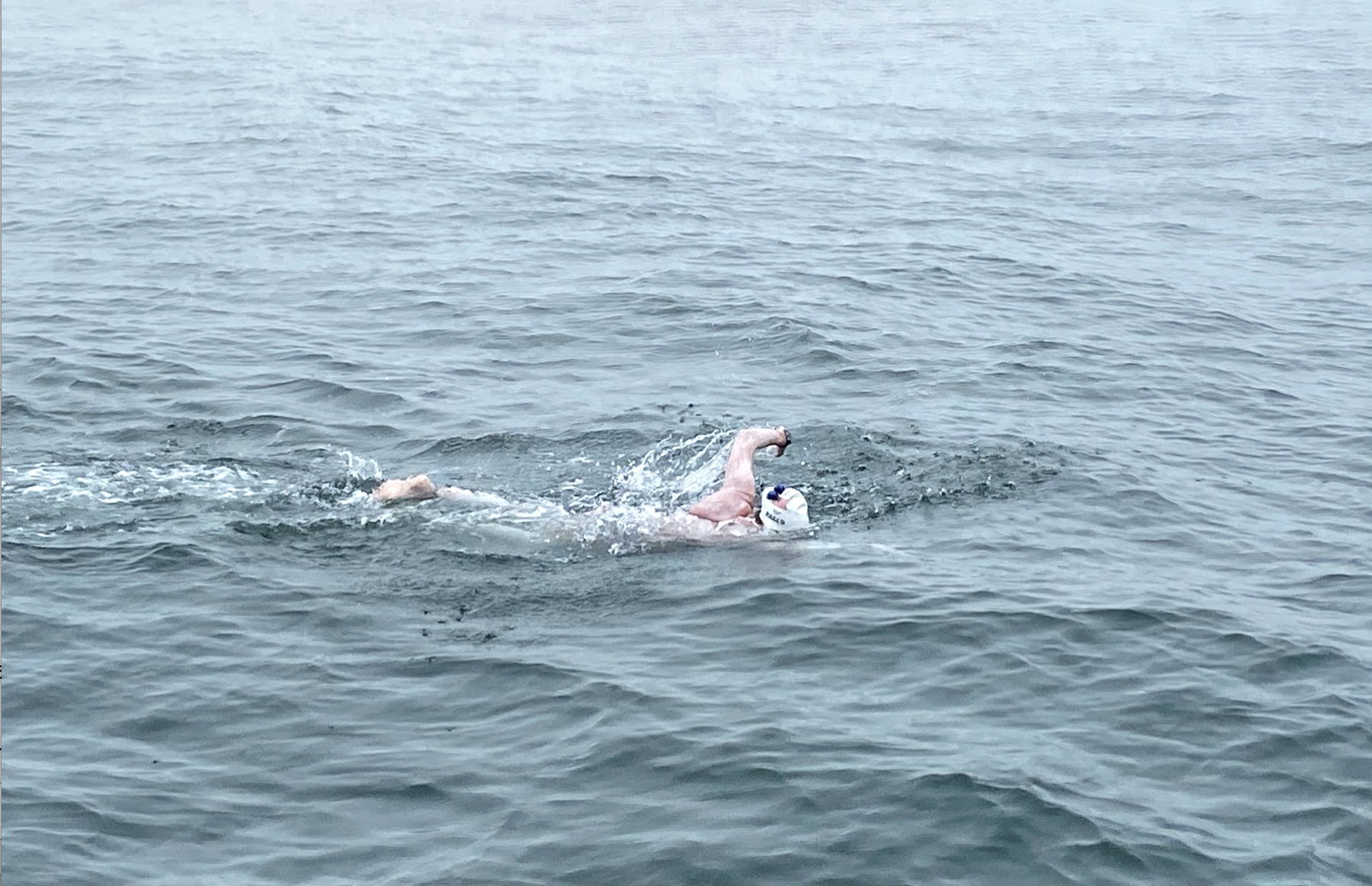
Breed swimming 25 miles from Santa Cruz to Monterey. Photo Robin Breed
“I’m not a professional athlete, I’m not being paid to do this,” explains Breed. “To swim 25 miles I need a reason, I need something bigger than myself to motivate me.” Struggling with cold, exhaustion and stinging sea nettles requires something more profound than proving how tough she is. Her Monterey Bay swim was a fundraiser for Diversity in Aquatics, a non-profit dedicated to education and promoting swimming, water safety and healthy aquatic activities for vulnerable populations. “So when it gets hard I have a reason to keep going,” she explains.
The World Health Organization estimates that 360,000 people die every year from unintentional drowning, and 90% of those deaths happen in low or middle income communities. According to the Center for Disease Control, black children between the ages of 5-19 die in pools at a rate 5.5 times higher than white children. USA Swimming and the University of Memphis found that more than three quarters of children from low income families have no ability to swim, while 64% of black children and 45% of Hispanic children have no swimming ability.
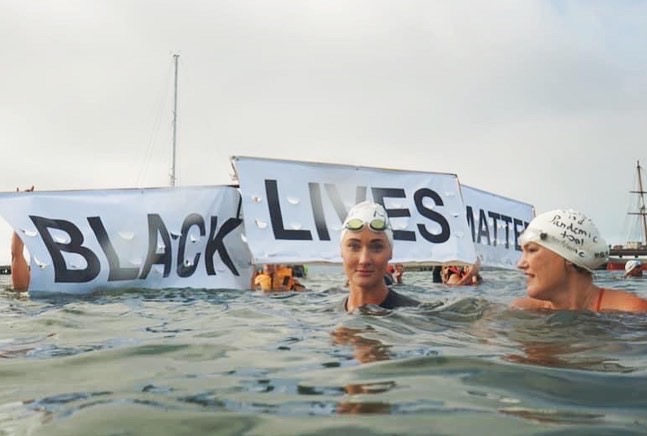
Breed organized the Juneteenth Swim Out In Solidarity earlier this year.
Diversity in Aquatics works to prevent drowning deaths by offering educational opportunities to traditionally under represented communities. They promote water safety, drowning prevention and other aquatic activities. “Our planet is mostly water, our bodies are mostly water, and all people unequivocally must know how to be one with it,” explains their website.
“I’ve always been passionate about bringing swimming to anyone, I think everyone should have the opportunity to learn how to swim,” Breed explained. “I’ve been teaching swim lessons since I was 13, I still teach even though I have a full time job.” But she recognizes that despite a legacy of accomplished African swimmers from Medieval times to the mid 1800s, modern swimming, particularly in America, has been dominated by people of Caucasian descent. So she searches for ways to combine her passion for swimming and Antiracism.
Earlier this summer she helped organize a Juneteenth Swim Out In Solidarity. Hundreds of participants jumped in the chilly waters of the San Francisco Bay, holding a banner reading Black Lives Matter and chanting for eight minutes and 46 seconds, the amount of time Derek Chauvin kneeled on George Floyd’s neck.
“George Floyd’s last word were, ‘I can’t breathe.'” Breed told the gathered crowd before jumping into the water, according to SF Gate. “Breath is really important in swimming … you have to think about it with every stroke you take. Don’t take any of those breaths for granted. Use your breath to create a voice. A voice loud enough for your friends and family to hear, and for the White House to hear.”
A commitment to antiracism doesn’t have to start with huge risks or heroic measures, insists Breed. “It’s small daily antiracist actions you can take to be more inclusive and expand your community. I listened in on a call with Diversity in Aquatics and they talked about changing the line up — they’re talking about in surfing, but you can expand your own personal line up as well. Even something as simple as consciously following athletes of color on Instagram has had a profound impact on my life.”
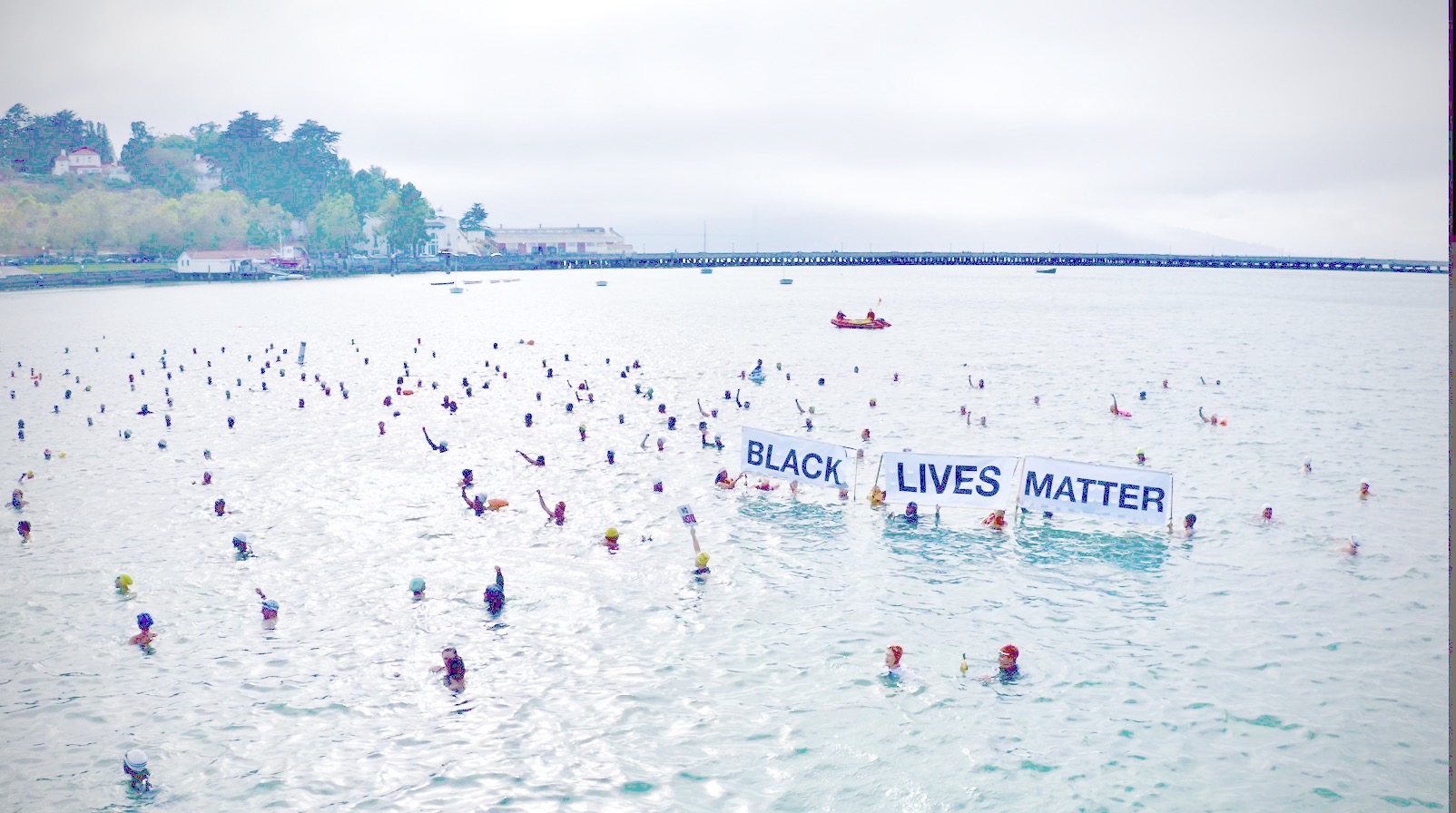
Juneteenth 2020 — swimmers holding a banner reading Black Lives Matter chanting for eight minutes and 46 seconds, the amount of time Derek Chauvin kneeled on George Floyd’s neck.
Breed believes that expanding diversity in water sports begins with each of us. “Start with your own community, your own friends. Invite someone to come participate in a sport with you, even if they’ve never done it before,” she suggests. “Be gentle, be a good coach. Get people excited about the outdoors and give them the tools and the knowledge to explore. Then they’ll bring friends and you’ve helped create another community of friends who go outside together.”
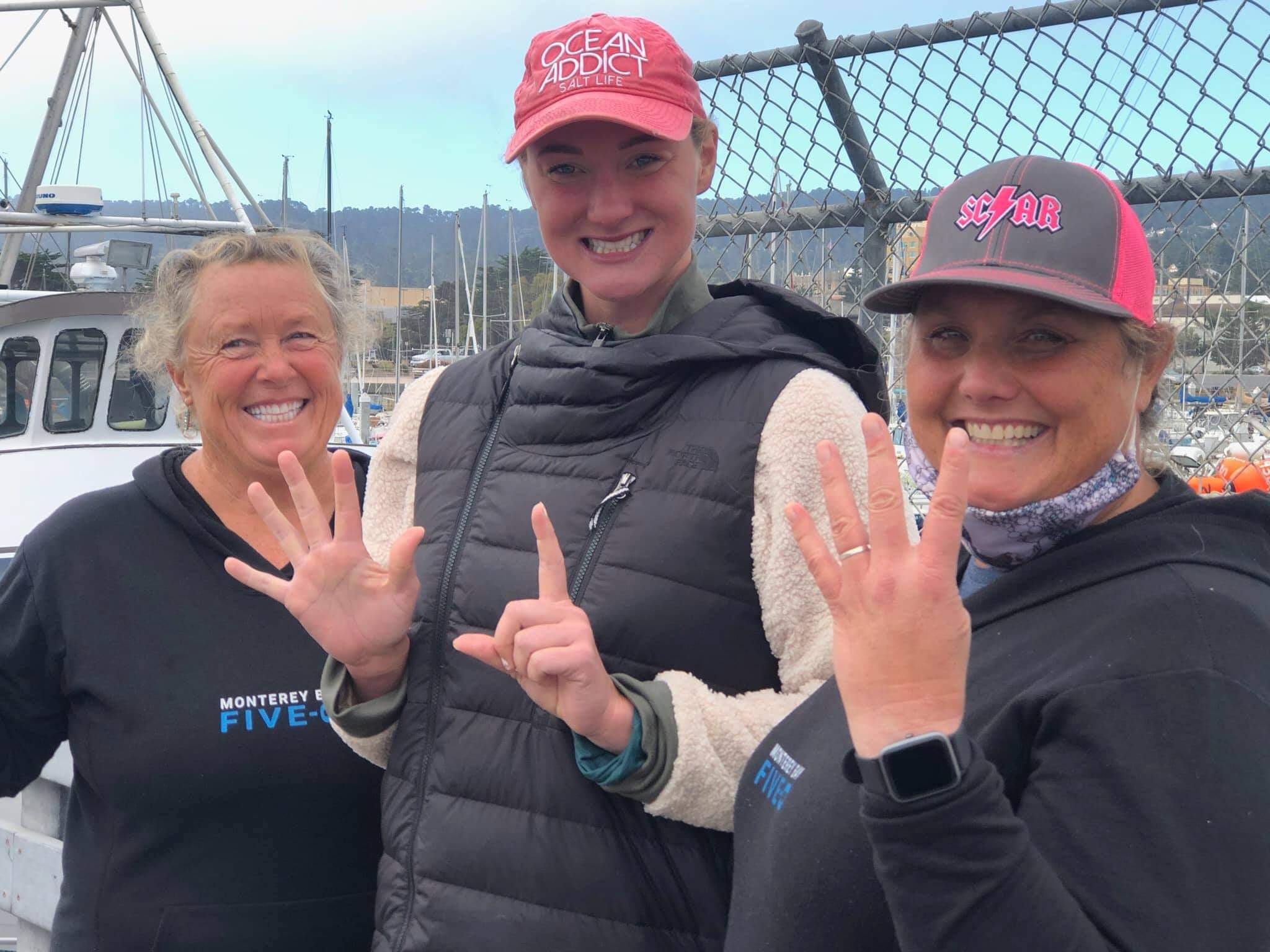
Breed with Kim Rutherford and Amy Gubser — both have previously swam Monterey Bay.
Ultimately, that community is what holds us all together and supports us, especially during chaotic and stressful times. Breed’s historic swim brought together about a dozen supporters, including her mother and two of the women who swam across the Monterey Bay before her. Breed crewed on the support boat for her prone paddler last year when he crossed the Bay to raise money for cystic fibrosis. “Everyone takes a turn in the different roles,” explains Tapley. “Even though there’s just one person doing the swim, these long distance swims are definitely a team sport.”
To learn more about Catherine’s swimming and donate to Diversity in Aquatics, visit the following sites.
MORE PHOTOS:
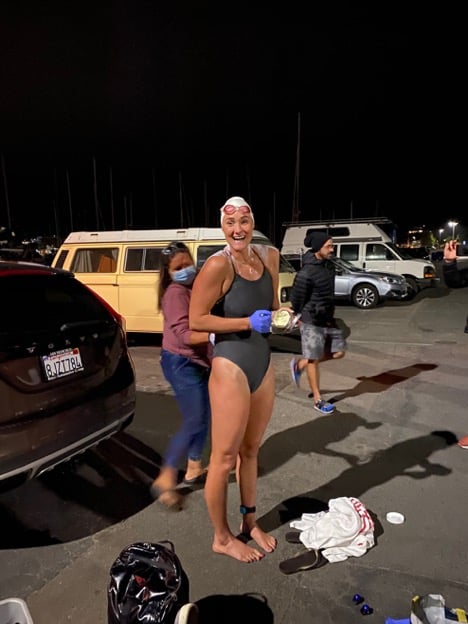
Gretchen Fermer applying desitin and safe seas to minimize stings. Photo: Robin Breed
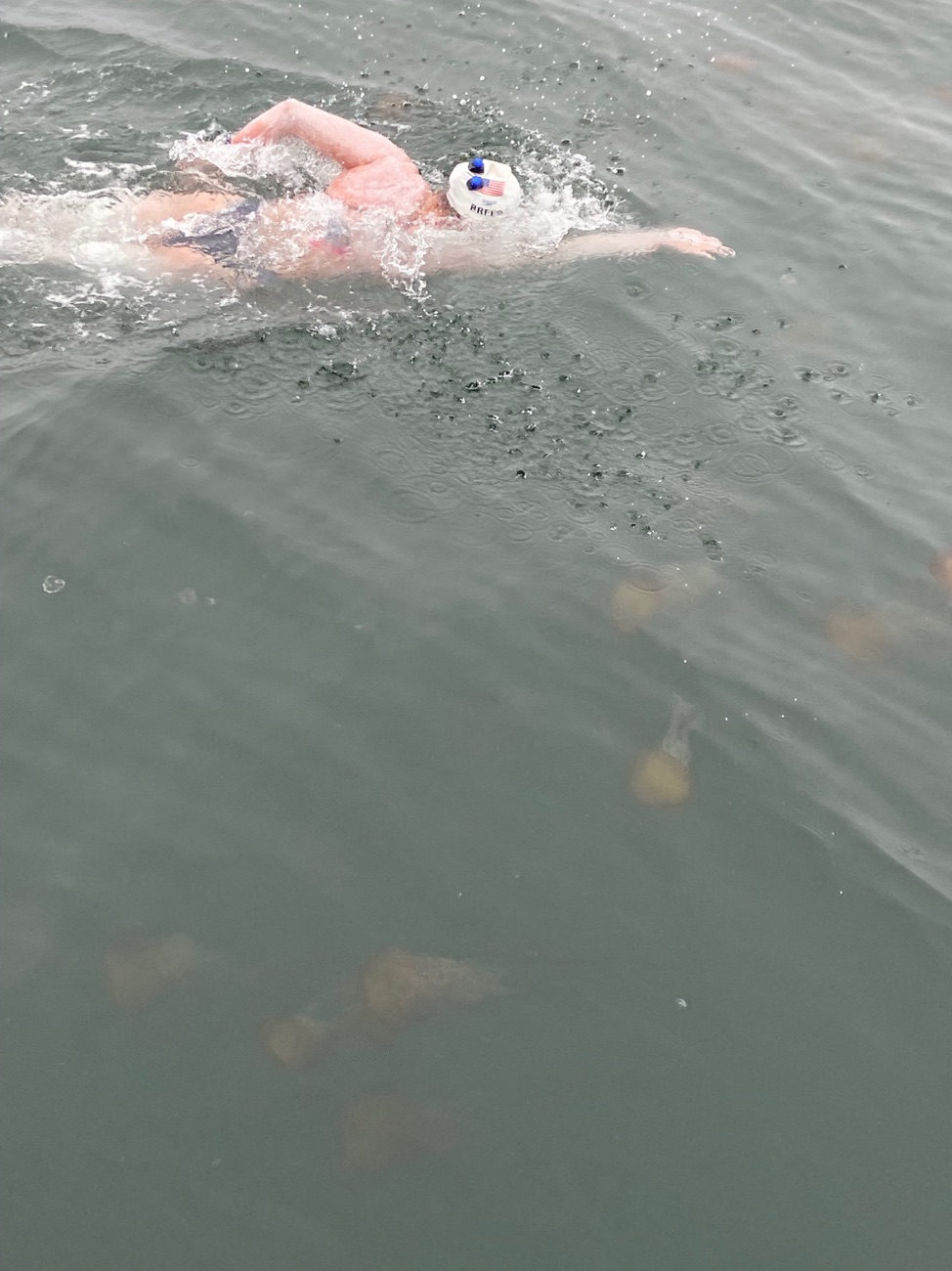
Swimming through sea nettles at the finish. Photo Robin Breed
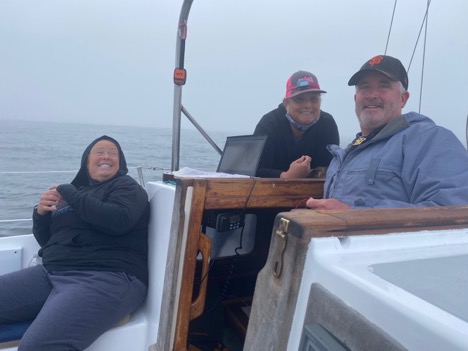
Crew Kim Rutherford, Greg Gubser, Amy Gubser, not pictured Robin Breed
Read more stories by Leonie Sherman
here.More swimming stories
here.









